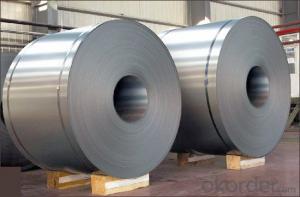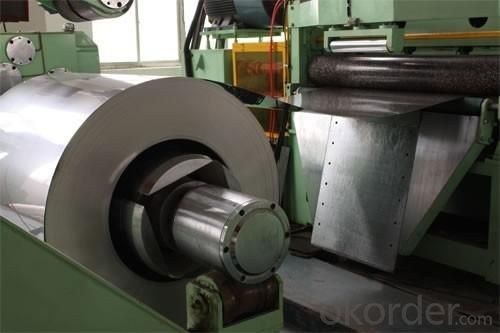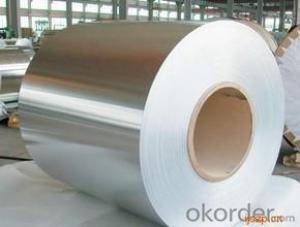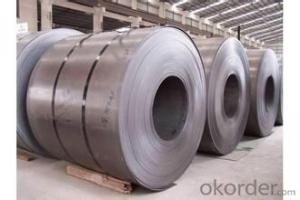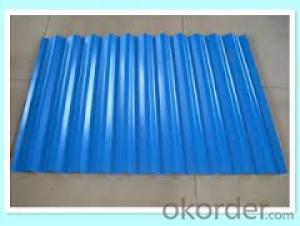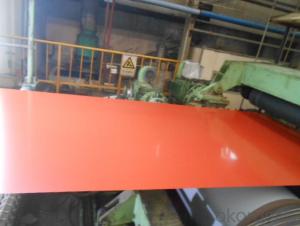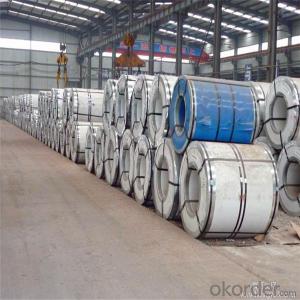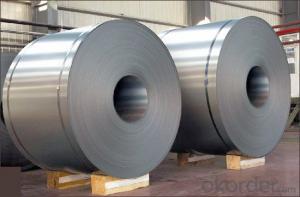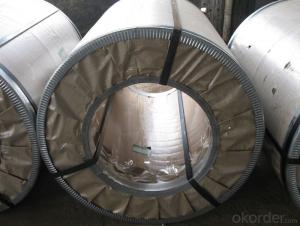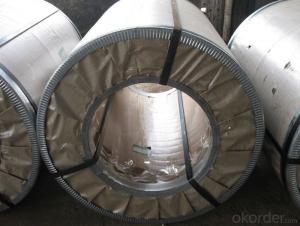Chinese Cold Rolled Steel Coil--Good Formability in Low Price
- Loading Port:
- China main port
- Payment Terms:
- TT OR LC
- Min Order Qty:
- 50 m.t.
- Supply Capability:
- 10000 m.t./month
OKorder Service Pledge
OKorder Financial Service
You Might Also Like
Chinese Cold Rolled Steel Coil--Good Formability in Low Price
1.Structure of Chinese Cold Rolled Steel Coil--Good Formability:
The raw material of cold rolled steel coil/sheet is high quality hot rolled product, and after pickling continuous rolling, degreasing, annealing,skin pass,slitting and cut to length line etc. Along with it many kinds of new technology and new process of global cold rolling production have been applied. Therefore the quality of the goods could be guaranteed. The product is widely used in outdoor and interior decoration, furnishing manufacturing, home appliance, automobile etc.
2.Main Features of the Cold Rolled Steel:
• Excellent process capability
• Smooth and flat surface
• Workability, durability
• Excellent heat resistance performance
• Good visual effect
3. Cold Rolled Steel Images: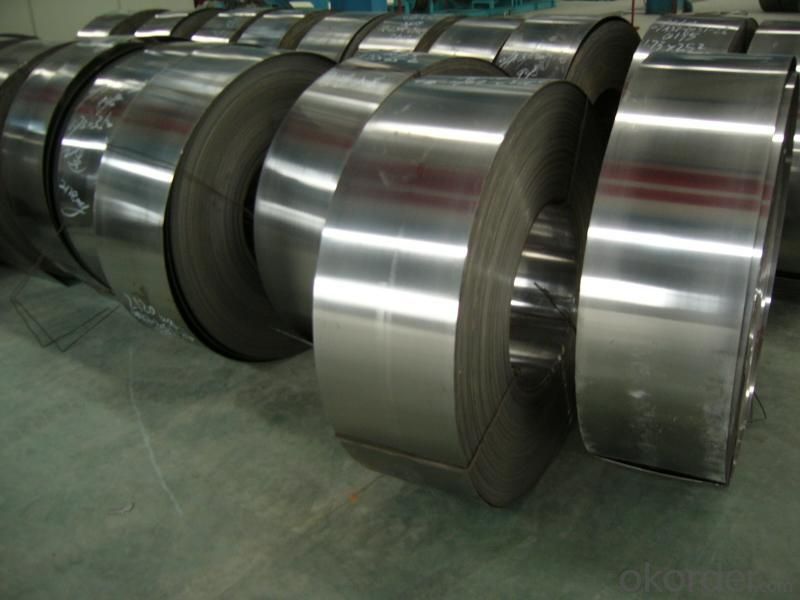
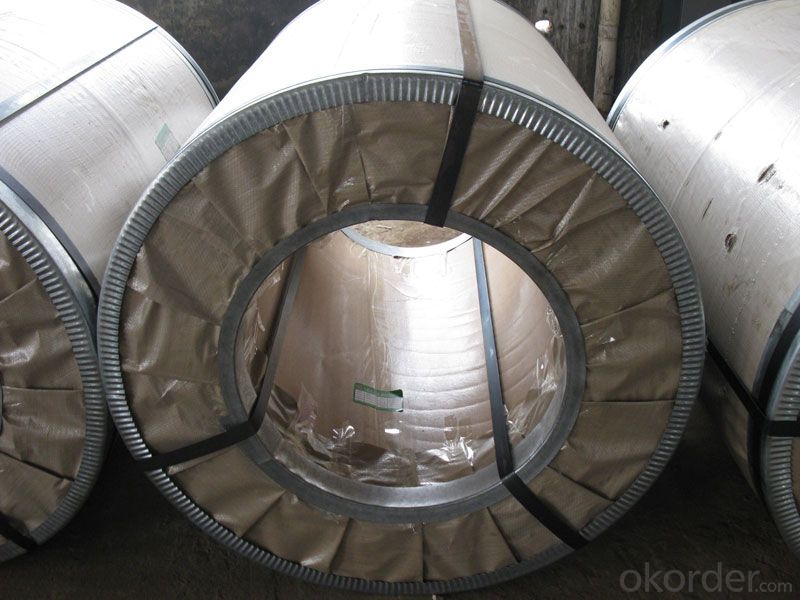
4.Cold Rolled Steel Specification:
Standard:AISI,ASTM,DIN,GB,JIS,JIS G3302 ASTM 653M EN10142
Grade: Q195~Q345
Thickness: 0.16mm~2.0mm
Width: 1250mm MAX
Coil weight:3-12 MT
FAQ
1.How to guarantee the quality of the products?
We have established the international advanced quality management system,every link from raw material to final product we have strict quality test.
2. How long can we receive the product after purchase?
Usually within thirty working days after receiving buyer’s advance payment or LC. We will arrange the factory manufacturing as soon as possible. The cargo readiness usually takes 15-25 days, but the shipment will depend on the vessel situation.
- Q: How are steel coils used in the production of electrical motors?
- Steel coils are used in the production of electrical motors as they serve as the core component of the motor's electromagnetic system. These coils are wrapped around an iron core, creating an electromagnetic field when electricity flows through them. This electromagnetic field generates the necessary force that allows the motor to convert electrical energy into mechanical energy, enabling the motor to function and perform various tasks.
- Q: What are the different coil leveling line configurations used for steel coils?
- There are several different coil leveling line configurations used for steel coils, each designed to meet specific requirements and preferences in the steel industry. Some of the commonly used coil leveling line configurations include: 1. Straightener - This configuration consists of a straightening machine that is used to remove any coil shape defects or distortion. It typically features a series of rollers that apply pressure to the coil, gradually straightening it out. 2. Leveler - A leveler configuration is used to flatten the coil, ensuring a consistent thickness throughout. This configuration typically utilizes a series of rollers that apply pressure to the coil, flattening it out to the desired thickness. 3. Combination Straightener/Leveler - This configuration combines the functions of straightening and leveling into a single machine. It features a combination of rollers and straightening elements, allowing for both shape correction and thickness leveling in a single pass. 4. Looping Pit - In this configuration, the coil is fed into a looping pit, which allows for the accumulation of coils to be processed continuously. The looping pit provides a buffer between the entry and exit sections of the leveling line, enabling continuous operation and accommodating variations in coil supply and demand. 5. Tension Leveler - A tension leveler configuration applies tension to the coil during the leveling process. This tension helps to remove shape defects and ensures a flat, uniform surface. 6. Rotary Shear - This configuration incorporates a rotary shear that cuts the coil to the desired length after it has been leveled. The rotary shear is typically synchronized with the speed of the leveling line to ensure accurate and precise cutting. These are just a few examples of the different coil leveling line configurations used for steel coils. The choice of configuration depends on various factors such as the desired final product specifications, coil dimensions, processing speed requirements, and budget considerations.
- Q: What are the different types of steel coil storage systems used during processing?
- There are several types of steel coil storage systems used during processing, including coil racks, coil cradles, coil saddles, coil cars, coil turnstiles, and coil transfer cars.
- Q: I heard about a new bike the specialized allez steel. Has anyone heard anything about it. it will have all brand new components like shimano 2300 parts and everything. it looks nice.
- Steel? I doubt it's made out of steel, more labor and a heavier frame. Most likely aluminum. Shimano 2300 you say? The Shimano 2300 is the lowest of the low of Shimano road components. Most likely not too reliable and heavy. www.cyclestore .uk/productDetai... I think this is what you might be looking for.
- Q: What is the average lifespan of a steel coil storage rack?
- The average lifespan of a steel coil storage rack can vary depending on various factors such as the quality of the rack, the frequency and intensity of use, and proper maintenance. However, on average, a well-maintained and properly used steel coil storage rack can last between 10 to 20 years.
- Q: How are steel coils used in the automotive industry?
- Steel coils are used in the automotive industry to manufacture various components such as car bodies, frames, and structural parts. The coils are first processed by being uncoiled, flattened, and then cut into the required shapes. These steel components provide strength, durability, and rigidity to vehicles, ensuring safety and structural integrity.
- Q: i have recently gotten into DIY and am planning on making my own knife. My question is what kind of steel would be good to use for heat treating if i plan on using water and not oil in the process.
- Go to junkyard get old leaf spring, cut out knife, start sharpening. Why waste time heat treating steel when the spring steel as already be done.
- Q: How do steel coils contribute to the oil and gas industry?
- Steel coils are an essential component in the oil and gas industry as they are used to manufacture various equipment and structures like pipelines, storage tanks, and drilling rigs. These coils provide the necessary strength, durability, and resistance to corrosion required for the harsh operating conditions in the industry. Additionally, steel coils are crucial in the transportation of oil and gas as they are used in the construction of tankers and pipelines, ensuring the safe and efficient movement of these valuable resources.
- Q: Ok so i have a certain amount of money that I want to invest in either GE or US Steel. Tickers: ge, x. GE looks like a strong co, but less risk. Whereas US Steel looks risky, but high reward. :). i am willing to take risks. Any comments?
- I would go with some in one and less in the other. Given that steel prices have collapsed (and seeing as the Chinese economy is going into a recession, they will probably stay low for a while) I would say that because US Steel is a blue chip company it will be around for the long term, but, it won't make much for a while. GE on the other hand has been beaten down thanks to some mismanagement issues under current CEO Jeffrey Immelt, however, they have a range of strong products (save for their broadcast division, RCA/NBC). Given that the stock is at a severe low with the company itself being worth quite a bit (with a fair amount of bailout funds coming to its' financial division) and the Obama administrations' green initiatives coming online over the next couple of years the demand for their products will be high. I would simply say 70/20 GE/US. Good luck.
- Q: I just got a set of all-clad Stainless steel frying pans, they are very nice yet they didn't come w/ instructions to care for them. I have never cooked w/ stainless steel cookware so I really don't know much about them. I was told they should have a lifetime warranty on them, but I don't want to reck them. I would appreciate any information I can get on stainless steel cookware. Thanks.
- Here's what All Clad has to say: Cleaning Cleaning the Stainless Steel Interior: Immerse in warm water. Use a fine powder cleanser with water to form a paste. Apply paste using a soft cloth. Rub in a circular motion from the center outward. Wash in hot, soapy water, dry immediately. DO NOT USE oven cleaners or cleansers with chlorine bleach. DO NOT USE steel wool. Cleaning the Steel Stainless Exterior: The polished stainless steel exterior of All-Clad Stainless requires very little care. It may be polished with one of the available commercial stainless steel cleaners, rubbing in a circular motion. Rinse in lukewarm water. We do not recommend using steel wool, steel scouring pads or harsh detergents. Nylon scrubbing pads are safe to use. You may wash Stainless in the dishwasher. The cleaners that they're talking about here are: Soft Scrub Bon Ami Barkeeper's Friend Those are the LEAST abrasive and won't harm your pans.....look for them in the cleaning aisle of your supermarket......How do you like your All Clad, BTW?? Just wondering......Enjoy!! Christopher
Send your message to us
Chinese Cold Rolled Steel Coil--Good Formability in Low Price
- Loading Port:
- China main port
- Payment Terms:
- TT OR LC
- Min Order Qty:
- 50 m.t.
- Supply Capability:
- 10000 m.t./month
OKorder Service Pledge
OKorder Financial Service
Similar products
Hot products
Hot Searches
Related keywords
